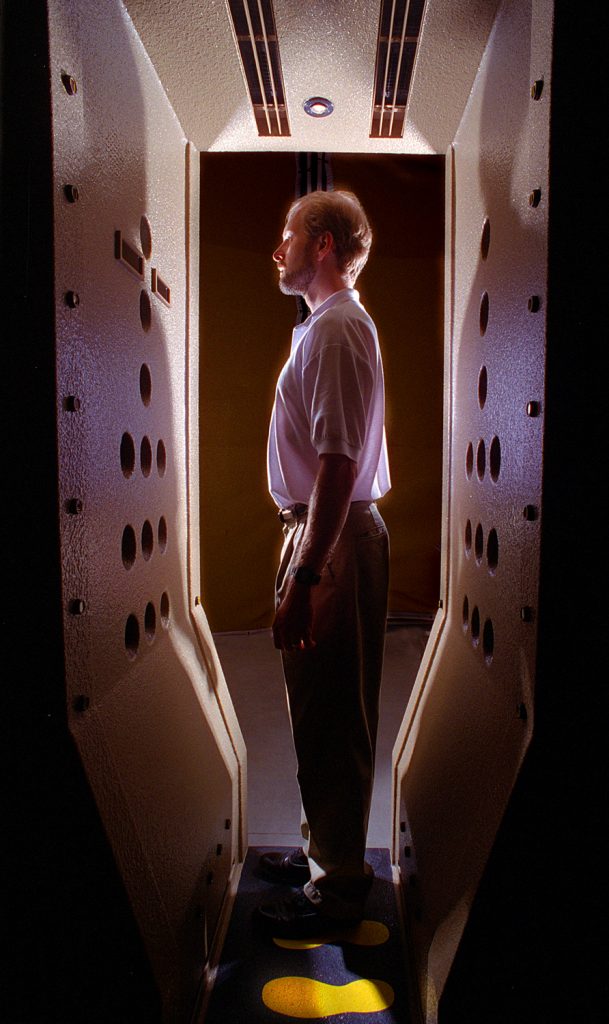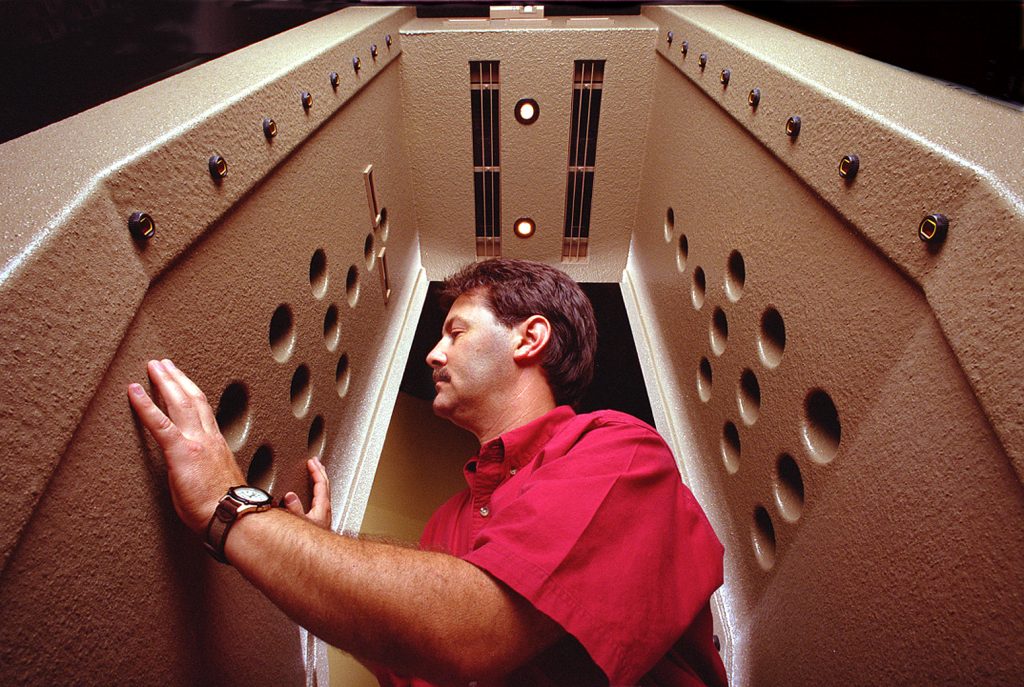ALBUQUERQUE, N.M. — Some airline passengers visiting the main security checkpoint at the Albuquerque International Airport this week are being asked to try out tomorrow’s technology for combating terrorism — an “explosives-detection portal” under development at Sandia National Laboratories for the Federal Aviation Adminstration (FAA).

The “portal” is intended to help prevent airliner hijackings and bombings by identifying passengers and airport visitors and employees who have recently been working with any of a wide variety of explosive chemicals.
The detector relies on chemical preconcentrator technology developed by Sandia as part of its Department of Energy mission to protect critical nuclear weapons facilities. The portal itself has been in laboratory development for three years.
During the two to four weeks the portal is in operation at the airport, the Sandia researchers plan to test more than 2,000 passengers having a range of body sizes and shapes. The purposes of the FAA-required tests are to gauge passenger acceptance of the technology, identify any reliability issues that need to be addressed, and optimize the detector’s performance with the ultimate goal of its widespread adoption at airports across the country.
Although specific information about the portal’s capabilities (the types and quantities of explosives it can detect) cannot be disclosed for security reasons, it is capable of detecting very small concentrations of all “explosives of interest” to the FAA, says Kevin Linker, Sandia’s lead researcher for the project.
As usual, passengers and visitors to the airport’s terminals will be required to pass through metal detectors and the usual carry-on baggage check regimen. A uniformed security officer then will ask some passengers to volunteer to help researchers test the explosives-detection portal. Volunteers can choose to stop participating at any time.
The new portal looks like an airport metal detector with vents and nozzles on its inside walls and ceiling. Passengers who agree to participate will be asked to stand inside the portal for a few seconds as the detector passes a quiet, gentle “puff” of air over them. The air sample is then collected and passed through a chemical sensor called an ion mobility spectrometer, which recognizes the chemical “signatures” of a variety of explosives. If a passenger had even a minute concentration of explosive residue on his or her skin or clothing, the quantity and type of chemical would be displayed on an adjacent computer screen. If a participant tested positive for explosives during the tests, and if suspicions remained following additional screening, airport security would be notified.

The portal is fully automated. It gives instructions to participants — “enter the portal,” “turn left,” “exit the portal” — in a friendly male voice.
Once the tests are complete, Sandia will submit its findings to the FAA, which will use the data to determine the feasibility of licensing and manufacturing the explosives-detection portal technology for use at airports across the country. Ultimately the technology likely would be incorporated into airport metal detectors as a single walk-through unit, says Kevin.
Besides airports, such portals could be useful at security checkpoints in public building entrances, and the basic technology could be adapted for drug detection.
Sandia is a multiprogram Department of Energy laboratory operated by Lockheed Martin Corp. With main facilities in Albuquerque and Livermore, Calif., Sandia has research and development programs contributing to national security, energy and environmental technologies, and economic competitiveness.